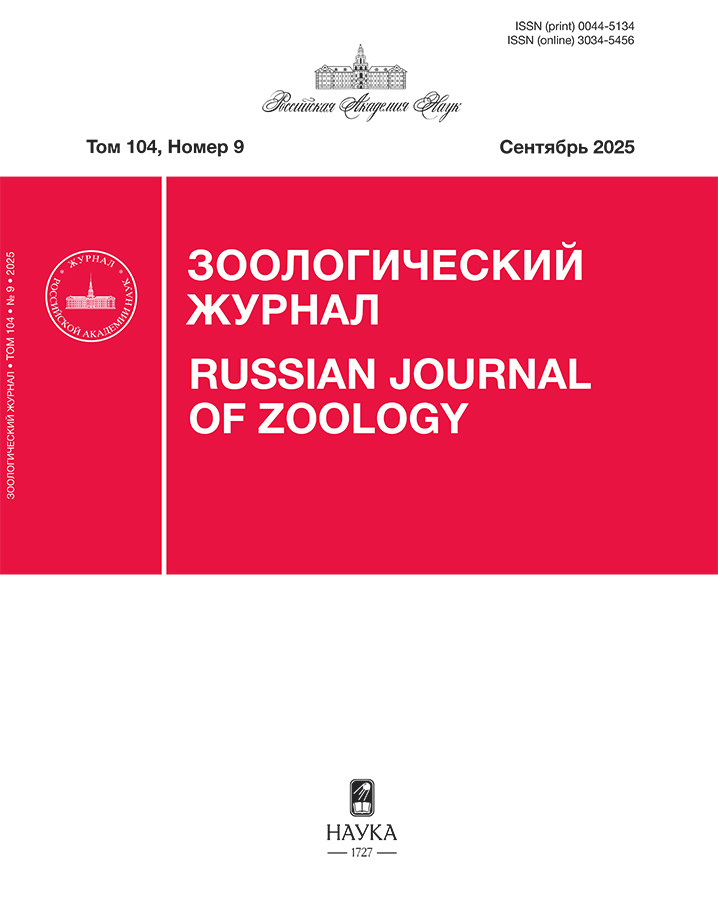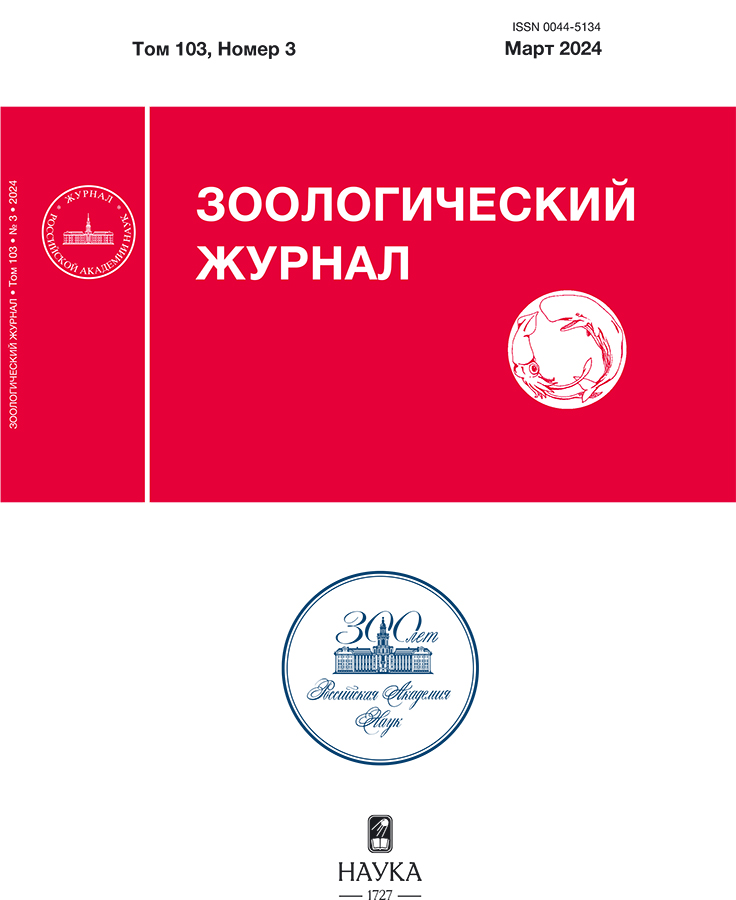Изменчивость черепа и вопросы таксономии бурого медведя (Ursus arctos) Тибетского нагорья
- Авторы: Орлов В.Н.1, Барышников Г.Ф.2, Кривоногов Д.М.3, Щегольков А.В.3
-
Учреждения:
- Институт проблем экологии и эволюции имени А.Н. Северцова РАН
- Зоологический институт РАН
- Нижегородский государственный университет имени Н.И. Лобачевского (Арзамасский филиал)
- Выпуск: Том 103, № 3 (2024)
- Страницы: 77-88
- Раздел: Статьи
- URL: https://cijournal.ru/0044-5134/article/view/654308
- DOI: https://doi.org/10.31857/S0044513424030095
- EDN: https://elibrary.ru/VBXKZW
- ID: 654308
Цитировать
Полный текст
Аннотация
Морфометрический анализ черепов бурого медведя (Ursus arctos L.) показал существование в XIX веке двух популяций этого вида в Тибете. Ареал северной популяции-I охватывал хребты Наньшаня и Куньлуня, окаймляющие с севера Тибетское плато, и заходил в северную часть плато (северо-запад провинции Цинхай, КНР). Ареал южной популяции-II включал верховья рек Хуанхэ, Янцзы и Меконг (юго-восток провинции Цинхай), а также, вероятнее всего, и весь Южный Тибет и Гималаи Непала. Диагностическими признаками двух популяций служат параметры хоан, ширина хоан у самцов и глубина – у самок. Отмеченные особенности хоан могут быть обусловлены анатомическим строением носоглотки – органа дыхательной системы, который обеспечивает прогрев воздуха до оптимальной температуры, прежде чем воздух попадет к бронхолегочным тканям. Дивергенция популяций бурого медведя Тибета, вероятно, связана с заселением высокогорного плато как из южных, так и северных рефугиумов ледниковий. Предлагается оставить за южной популяцией-II принятое в настоящее время подвидовое название U. a. pruinosus Blyth 1854 и восстановить его младший синоним, U. lagomyiarius Przewalski 1883, для обозначения северной популяции-I. Уточнение таксономического статуса популяций медведей в провинции Цинхай (КНР) – наиболее освоенной человеком части Тибета – способно повлиять на оценку их охранного статуса, который в настоящее время определен МСОП относительно всех медведей Тибета как LC (“вызывающий наименьшие опасения”).
Ключевые слова
Полный текст
Об авторах
В. Н. Орлов
Институт проблем экологии и эволюции имени А.Н. Северцова РАН
Email: deniskrivonogov@mail.ru
Россия, Москва, 119071
Г. Ф. Барышников
Зоологический институт РАН
Email: deniskrivonogov@mail.ru
Россия, Санкт-Петербург, 199034
Д. М. Кривоногов
Нижегородский государственный университет имени Н.И. Лобачевского (Арзамасский филиал)
Автор, ответственный за переписку.
Email: deniskrivonogov@mail.ru
Россия, Арзамас, 607220
А. В. Щегольков
Нижегородский государственный университет имени Н.И. Лобачевского (Арзамасский филиал)
Email: deniskrivonogov@mail.ru
Россия, Арзамас, 607220
Список литературы
- Абрамов А.В., Барышников Г.Ф., 1990. Каталог типовых экземпляров коллекции Зоологического института СССР. Млекопитающие. Вып. 2. Хищные (Carnivora), хоботные (Proboscidea), десмостилии (Desmostylia). Л.: ЗИН РАН. 23 с.
- Банников А.Г., 1954. Млекопитающие Монгольской Народной Республики. М.: Наука. 669 с.
- Барышников Г.Ф., 2007. Медвежьи (Carnivora, Ursidae). СПб.: Наука. 541 с. (Фауна России и сопредельных стран. Млекопитающие. Т. 1. Вып. 5).
- Васильев С.К., 2021. Остатки байкальского яка (Poehpagus mutus baikalensis N. Verestchagin, 1954) из позднеплейстоценовых местонахождений Южной Сибири. Труды Зоологического института РАН. Т. 325. № 4. С. 384–408.
- Гептнер В.Г., Насимович А.А., Банников А.Г., 1961. Млекопитающие Советского Союза. Парнокопытные и непарнокопытные. М.: Высшая школа. Т. 1. 776 с.
- Грум-Гржимайло Г.Е., 1907. Описание путешествия в Западный Китай. Т. 3. СПб.: Изд. Импер. Русск. Геогр. Об-ва. 531 с.
- Козлов П.К., 1906. Монголия и Кам. Труды экс. Имп. Русск. Геогр. Об-ва, совершенной в 1899-1901 гг. Т. 1, ч. 2. СПб.: С. 257–734.
- Мурзаев Э.М., 1966. Природа Синьцзяна и формирование пустынь Центральной Азии. М.: ГИГЛ. 382 с.
- Огнев С.И., 1931. Звери Восточной Европы и Северной Азии. 2. Хищные млекопитающие. М.–Л.: Госиздат. 776 с.
- Пржевальский Н.М., 1875. Монголия и страна тангутов. Трехлетнее путешествие в восточной нагорной Азии. Второе путешествие по Центральной Азии. Т. 1. СПб.: Изд. Импер. Русск. Геогр. Об-ва. 330 с.
- Пржевальский Н.М., 1883. Из Зайсана через Хами в Тибет и на верховья Желтой реки. Третье путешествие по Центральной Азии. СПб.: Изд. Имп. Русск. Геогр. Об-ва. 473 с.
- Пржевальский Н.М., 1888. От Кяхты на истоки Желтой реки, исследование северной окраины Тибета и путь через Лоб-Нор по бассейну Тарима. Четвертое путешествие в Центральной Азии. СПб.: Изд. Имп. Русск. Геогр. Об-ва. 536 с.
- Роборовский В.И., 1900–1901. Труды экспедиции Императорского Русского Географического Общества по Центральной Азии, совершенной в1893–1895 гг. под начальством В.И. Роборовского. СПб.: Изд. Импер. Русск. Геогр. Об-ва. Части 1–3.
- Роборовский В.И., Козлов П.К., 1896. Экскурсии в сторону от путей Тибетской экспедиции. СПб.: Изд. Импер. Русск. Геогр. Об-ва. 128 с.
- Cоколов В.Е., Орлов В.Н., 1996. Гобийский медведь, мазаалай – Ursus gobiensis Sokolov et Orlov, 1992 // Редкие животные Монголии (позвоночные) / под ред. акад. В.Е. Соколова. М.: ИПЭЭ РАН. С. 136–141.
- Флеров К.К., 1935. Хищные звери (Fissipedia) Таджикистана // Виноградов Б.С. и др., Звери Таджикистана, их жизнь и значение для человека. С. 131–171.
- Abbas F., Bhatti Z.I., Haider J., Mian A., 2015. Bears in Pakistan: distribution, population biology and human conflicts // J. Biores. Manage. V. 2. Р. 1–13.
- Aryal A., Sathyakumar S., Schwartz C.C., 2010. Current status of the brown bear in Manasalu Conservation Area Nepal // Ursus. V. 21. P. 109–114.
- Blyth J., 1854. Report of zoological curator for September meeting // Proceedings of the Asiatic Society Bengal. V. 22. P. 589.
- Chestin I.E., 1996. Variability in skulls of Central Asian brown bears // Journal of Wildlife Research (Poland). V. 1. P. 70–75.
- Driscoll С.A., Yamaguchi N., Bar-Gal G.K. et al., 2009. Mitochondrial phylogeography illuminates the origin of the extinct Caspian tiger and its relationship to the Amur tiger // PLoS ONE 4(1): e4125.
- Ellerman J.R., Morrison-Scott T.C.S., 1951. Check-list of Palaearctic and Indian Mammals 1758 to 1946. London. 850 p.
- Galbreath G.J., Groves C.P., Waits L.P., 2007 Genetic resolution of composition and phylogenetic placement of the isabelline bear // Ursus. V. 18. P. 129–131.
- Hewitt G.M., 1999. Post-glacial recolonization of European biota // Biological Journal of the Linnean Society. V. 68. P. 87–112.
- Hirata D., Mano T., Abramov A.V. et al., 2013. Molecular phylogeography of the brown bear (Ursus arctos) in northeastern Asia based on analyses of complete mitochondrial DNA sequences // Mol. Biol. Evol. 30, P. 1644–1652.
- Lan T., Gill S., Bellemain E. et al., 2017. Evolutionary history of enigmatic bears in the Tibetan Plateau–Himalaya region and the identity of the yeti // Proceedings of the Royal Society B: Biological Sciences. V. 284. № 1868. P. 20171804.
- Leslie D.M., Schaller G.B., 2009. Bos grunniens and Bos mutus (Artiodactyla: Bovidae) // Mammalian species, V. 836. P. 1–17.
- Lydekker R., 1897. The blue bear of Tibet, with notes on the members of the Ursus arctos group // Proceeding Zool. Soc. London. P. 412–426.
- Mayr E., 1969. Principles of systematic zoology. N.Y.: Mc-Grow Hill Bok Co. 428 p.
- McLellan B.N., Proctor M.F., Huber D., Michel S., 2017. Ursus arctos (amended version of 2017 assessment) // The IUCN Red List of Threatened Species. e.T41688A121229971.
- Segawa T., Yonezawa T., Mori H. et al., 2021. Ancient DNA reveals multiple origins and migration waves of extinct Japanese brown bear lineages // Royal Society Open Science. V. 8. № 8. P. 210518.
- Tumendemberel O., Hendricks S.A., Hohenlohe P.A. et al., 2023. Range-wide evolutionary relationships and historical demography of brown bears (Ursus arctos) revealed by whole-genome sequencing of isolated central Asian populations // Molecular Ecology.
- doi: 10.1111/mec.17091
- Yang S., Dong H., Lei F., 2009. Phylogeography of regio- nal fauna on the Tibetan Plateau: a review // Progress Nat. Sci. V. 19. P. 789–799.
- Zhang R., Zheng C., 1981. The geographical distribution of mammals and the evolution of mammalian fauna in Qinghai–Xizang Plateau // Geological and ecological studies of Qinghai–Xizang Plateau. Beijing: Science Press. P. 1005–12.
- Zheng B., Xu Q., Shen Y., 2002. The relationship between climate change and Quaternary glacial cycles on the Qinghai-Tibetan Plateau: review and speculation // Quaternary Int. V. 97. P. 93–101.
Дополнительные файлы

















